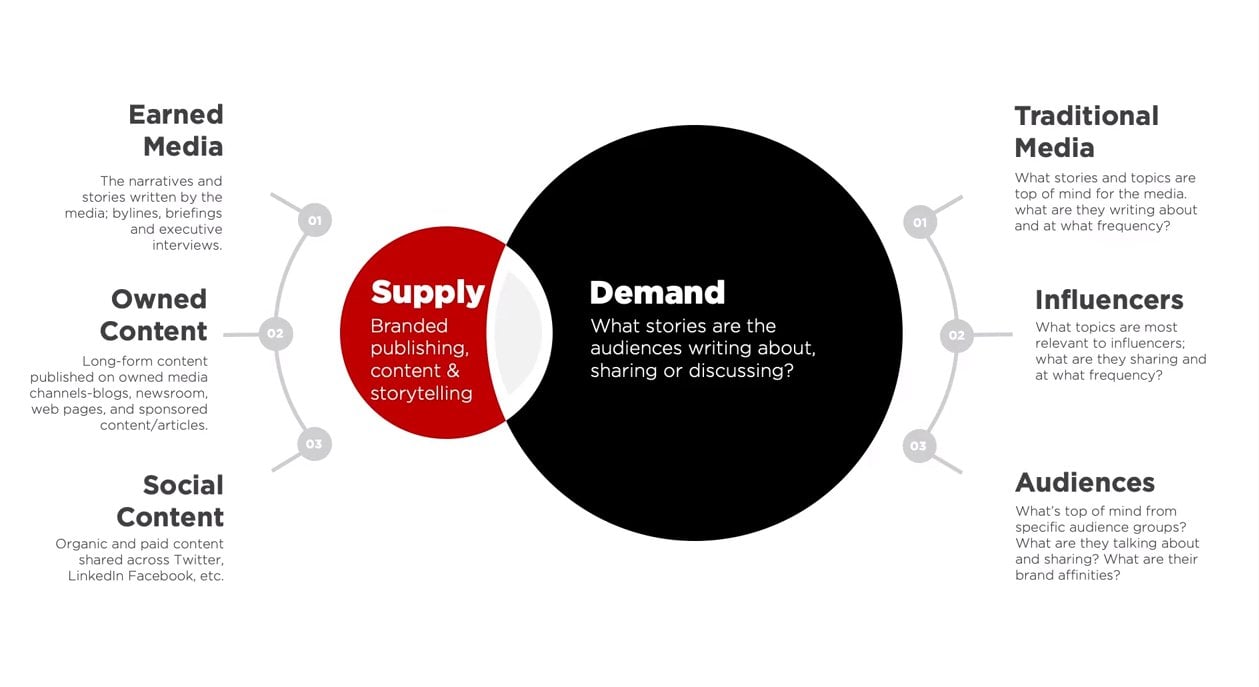How to apply the supply & demand model to content creation and brand relevance
Applying an economic model to a marketing strategy may sound strange to many, but I assure you after reading this post and watching the video of our friend Michael Brito (EVP of Digital & Analytics at Zeno Group) presenting this methodology, you will have no doubt in how valuable it is for content creation and brand relevance strategies.
Supply and demand is the market response to the relationship between the quantity of available goods and the price consumers are willing to pay for a product or service. In short, the greater the quantity of a product / service available in the market, the lower its value and the greater the demand for a good, the higher its value.
According to Michael Brito, which we agree with, this model is applicable to content creation and brand relevance. If you want your content and your brand to be of higher value for consumers and users, pay attention to this methodology! It’s time to apply analytics and learn to fill in the gaps ‘the demand’ by your target audiences.
Applying social listening and audience intelligence to identify what your audience's demand
When you take into account the fact that public attention is increasingly a precious commodity as a result of the vast amount of content that already exists, it is essential to gain an in-depth understanding of what are the interests, affinities, characteristics and needs of your target audiences. This applies to several strategies within a company, from marketing in its strictest sense to PR or even influencer marketing.

When it comes to applying this model to the relevance of the Brito brand, he highlights the following: “There’s an argument among economists as to what comes first, supply or demand? Now, within the context of brand relevance, more specifically using analytics to define brand relevance, I believe that demand comes first.” As we can see in the image above, which illustrates the supply and demand model applied to content creation and brand relevance, the first step is to analyze what is being demanded by the relevant segments in order to determine the gaps that need to be bridged with our content.
You need to be aware of the topics and trends being covered by the media, what they write about and it’s frequency.
If you’re looking at influencers, you need to know who are the relevant people and brands for your target audience (bearing in mind that they will also be considered a target audience in themselves) in order to analyze who they are and what characteristics they hold. Only then will you be able to track their behaviour and conversations to uncover the most relevant topics for them and what they share content about.
If it is an audience that is a specific target audience (with sociodemographic characteristics and representative interests of that target group) you don’t just need to know who they are but also what interests they have, what affinities they hold, what issues they generate, what conversations they participate in and via what channels they do so…
Both social listening and audience intelligence will help you shape that image of what consumer demand means and from there you will be able to analyze whether your brand is responding to the needs of your target audiences.
Adapting your content offering to the demands of your target audiences
Once you have identified what the demand is, you have to try to fill that gap: providing a storytelling experience that the media can use to create their content around using the point of view and discourse that your brand provides. The aim of the game is to create content that meets the needs of your target audiences, distribute it in formats best aligned with your audiences and make use of the channels most used by them. This all revolves around the topics and trends that are of interest to your target audiences. You need to create a narrative that adjusts to what your audience's demand.
Now, we invite you to watch this video in which Michael Brito explains in detail the entire methodology and gives examples of how to apply the supply and demand model to content creation and brand relevance.
Original photo by Charles Deluvio on Unsplash.







